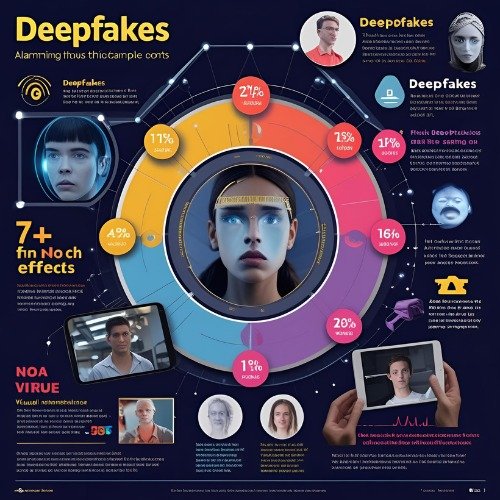What Are Deepfakes? Understand the Danger Behind AI-Generated Fakes

Learn how deepfakes work, why they’re dangerous, and how SOHUM protects victims from AI-generated fake content.
Introduction
Deepfakes have transformed from fascinating tech experiments into powerful tools for deception
and harm. Using artificial intelligence (AI) and machine learning, deepfakes can swap faces in videos, generate realistic audio imitations, and create false narratives. But behind the technology lies a dark reality, especially for individuals whose lives are torn apart by fake, non-consensual content.
What Is a Deepfake?
A deepfake is synthetic media created using deep learning algorithms, particularly Generative.
Adversarial Networks (GANs). These AI systems learn from vast datasets of images, voices, or videos to mimic a person’s face, expressions, or voice with eerie accuracy. The result: fake but realistic-looking videos or audio that can be almost impossible to detect without advanced tools.
How Deepfakes Are Made
Deepfake creation tools have become increasingly accessible. Today, anyone with a decent Computer and internet access can:
- Download a deepfake app
- Input video/image data of a target
- Generate manipulated content in hours
Deepfake creation tools have become increasingly accessible in recent years. What once required advanced technical skills and expensive hardware can now be done by virtually anyone with a moderately powerful computer and internet access. The barrier to entry has significantly lowered, making the creation of convincing manipulated content more widespread than ever.
Today, a person can simply download a deepfake app or open-source software, input video or image data of a target—often scraped from social media—and generate manipulated content within a matter of hours. No specialized knowledge in machine learning or programming is required; many platforms now offer step-by-step instructions or easy-to-use interfaces.
Common tools include DeepFaceLab, FaceSwap, and mobile apps that are often disguised as
innocent filters. Many of these apps are disguised as harmless entertainment tools or face filters, making it difficult to identify their true purpose until the content is already created and potentially shared.
Learn how public figures deal with deepfake p*rn, fake voice videos, and social media impersonation – and how you can too.
Why Deepfakes Are Dangerous
- Personal Damage: Victims suffer trauma when their faces appear in fake p*rnography
or revenge content. - Reputation Ruin: Public figures can be targeted with fake videos, causing
career-threatening scandals. - Political Misinformation: Deepfakes have been used to spread fake speeches or
statements. - Cyberbullying & Blackmail: Threats and extortion based on fake content are rising
Who Is Most Vulnerable?
- Women: Especially targeted in revenge p*rn and non-consensual adult content
- Teenagers & Children: Easy targets for bullying and grooming
- Public Figures & Influencers: Reputation is their livelihood
Real-World Impact
- In India, several female journalists and actors have been targeted with fake nude videos.
- A 2023 case in the U.S. saw a deepfake used to falsely accuse a politician of bribery.
How SOHUM Helps
SOHUM offers:
- Permanent removal of deepfake content from websites, social media, and search engines
- AI-based detection to track duplicates and reposts
- Confidential support for victims
- Legal and cyber investigation partnerships for takedown and justice
Final Word
Deepfakes are not just a tech trend – they are a threat to personal safety and truth. With
SOHUM, victims can reclaim control and protect their dignity.
Submit a Deepfake Link for Removal
Related Posts
They Tried to Break Them Online. But They Fought Back
When the Internet Turns Against You: A Story of Revenge, Pain, and Redemption
Victim of a Deepfake? Take These 5 Immediate Steps
Deepfake Laws in India (2025) – What Victims Need to Know
How Celebrities Are Fighting Deepfake Attacks Online
Best Ways to Delete Negative Reviews from Google
How to Report Cyberbullying on Social Media?
How Deepfakes Are Used To shame And Silence
How to Remove Deepfake Videos from the Internet: A Complete Guide
Protecting your digital presence with expertise in cybersecurity, reputation strategy, and legal support. Trusted by individuals and businesses for effective content removal.
Copyright @2025 Sohum.one. All Rights Reserved



